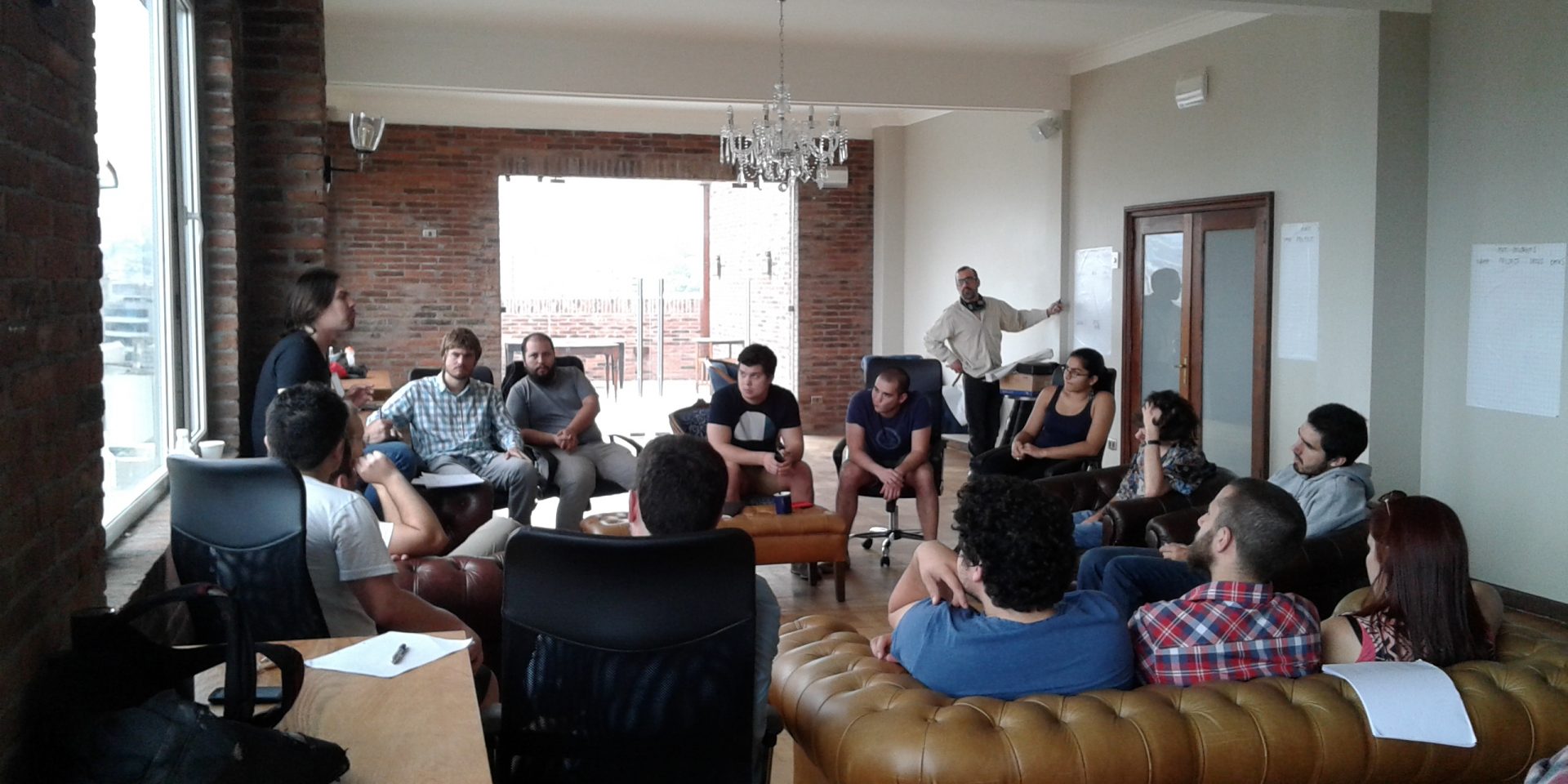

In this paper, we present a spatial agent-based model of the emergence and proliferation of premodern complex societies in an isolated region initially inhabited by simple societies.
At the intrasocietal level, the model integrates scalar stress, social fission, sociocultural evolution, societal collapse, and Malthusian-Ricardian demographic dynamics. At the geographical level, the model includes warfare for territory and captives, territorial division due to social conflict, and territorial disintegration due to societal collapse. The force that drives the social and geographical dynamics is the continuous progress in intensive agriculture.
We found that simulations go through three consecutive “eras”:
During the first era, simple societies dominate the region. They use extensive food production methods. Small complex societies of intensive agriculturists emerge intermittently in the core land, where intensification is feasible. Shortly after, they collapse or are annihilated by local simple societies.
During the second era, some complex societies avert early collapse and annihilation. They expand by conquest. At all times, complex societies coexist with simple societies. Some complex societies are destroyed in war; others collapse. From time to time, complex societies collapse en masse.
During the third era, there are no more mass collapses. Complex societies expand until they dominate the core land. Simple societies take refuge in the marginal land, where intensification is unfeasible. Simple and complex societies coexist, separated by a flexible frontier. In an ebb and flow, complex societies expand to the marginal land, the local simple societies fight back, and the complex societies collapse or retreat to the core land.
The results of the model are qualitatively consistent with prehistorical and historical case studies.
Scott (2009) argued that the main enemies of complex societies were not other complex societies but simple societies lived on the margins of the fertile niches where agriculture was adopted. As the last 900 years of history in Zomia show, a flexible frontier can allow the simple and complex societies to spatially coexist.
Our model integrates and formalizes several anthropological theories based on stylized facts about sociocultural evolution. By bringing all these elements together, it is able to reproduce a sequence of geographical dynamics that usually accompanies sociocultural evolution:
Here you can see a sample simulation.
During the first era, simple societies dominate the region. Small complex societies of intensive agriculturists emerge intermittently. They collapse or are annihilated by local simple societies.
Here you can see a video of the first era of a sample simulation
The model’s first era (c. 1100―c. 1600) approximates the Mississippian chiefdoms of the Savannah River basin. The Mississippian chiefdoms exhibited the characteristic cycle of emergence, expansion, fragmentation, and collapse. There is archeological and paleoclimatological evidence that this cycle was driven by a combination of environmental and political forces, mainly food shortages caused by prolonged droughts and the rise of competing chiedoms in nearby drainages (Anderson 1996). Note that the model includes environmental shocks but excludes political competition between societies.
During the second era, some complex societies are destroyed in war; others collapse. From time to time, complex societies collapse en masse. Some complex societies avert early collapse and annihilation by expanding through conquest.
Here you can see a video of the second era of a sample simulation
The history of Ancient Mesoamerica is similar to the dynamics of the model’s 2nd era.
Around 3500 BC, farmers established sedentary societies on the arable lands of Mesoamerica (Roush 1997). Maize, beans, and squash were the mainstays of their diet (Casas et al. 1998).
During the following 52 centuries, the Mesoamericans intensified agriculture, developing and refining a variety of methods and technologies, including the milpa cycle (a form of shifting agriculture), pet kots (forest gardens), irrigation with canals, coo yuu (terraces), and chinampas (floating gardens) (Challenger 1998). Their TFP of intensive agriculture steadily increased.
In parallel with the agricultural intensification, sedentary Mesoamerican societies became more complex. City-states emerged. The wars between them were frequent and exacerbated over time. Some city-states expanded by conquest or alliance, and a few became civilizations (Bueno 2007; Hassig 1992). The Olmec was the first civilization to appear. It originated circa 1400 BC in the lowlands of the Gulf Coast. At its peak, the Olmec civilization reached a population of approximately 350,000 inhabitants (Fernández 2004).
Collapse was a constant threat to Mesoamerican regional polities. The Olmec, for example, declined between 400 and 350 BC for uncertain reasons. One theory is that changes in the Gulf’s riverine environment drastically reduced agricultural productivity, making it impossible to maintain a large population (Pool 2007).
Mass collapses also occurred in Mesoamerica. For example, in the middle of the eighth century AD, prolonged droughts and political crises led to a mass collapse in the northern region. The region was abandoned by the Mesoamerican people and later occupied by Aridamerican nomads (Solanes & Vela 2000).
Civil wars were another threat to Mesoamerican complex societies. A well-documented example is the Mayan civil war of the seventh century AD. The war was started by two sons of K’inich Muwaan Jol II. The (probably half) brothers disputed the royal emblem glyph of Tikal and the sovereignty over its vassal city-states (Guenter 2003).
In the third era, there are no more mass collapses. Complex societies expand until they dominate the core land, and simple societies take refuge in the marginal land. In an ebb and flow, complex societies invade the marginal land, the local simple societies fight back, and the invaders retreat to the core land.
We observe ebb and flow dynamics resembling Scott’s account of the flexible frontier for the control of the states from the downstream (hilir) exerted on the upstream (hulu in the Malay world) peoples of the region of Zomia during the last 900 years.
|
|
Ricardo GuzmánPrincipal InvestigatorPh.D in Economics, Pontificia Universidad Católica de Chile. Research interests: Contact: |
 |
Carlos RodríguezPh.D. in Economics, University of Cambridge, UK. Research interests: Contact: |
 |
Sammy DrobnyPh.D StudentBA in History and Political Sciences, Pontificia Universidad Católica de Chile. Research interests: Contact: |